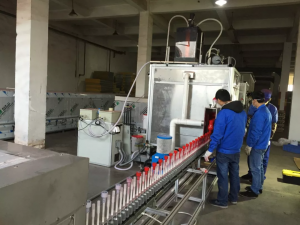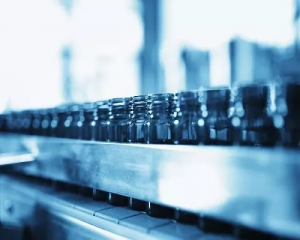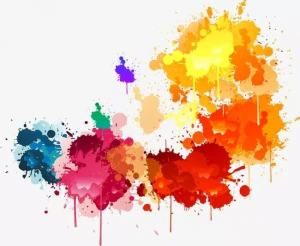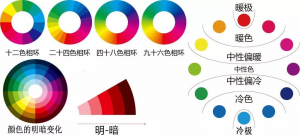Glass bottle coating is an important surface treatment link in the field of cosmetic packaging. It adds a beautiful coat to the glass container. In this article, we share an article about glass bottle surface spraying treatment & color matching skills.
Ⅰ、Glass bottle paint spraying construction operation skills
1. Use clean diluent or water to adjust the paint to a suitable viscosity for spraying. After measuring with a Tu-4 viscometer, the suitable viscosity is generally 18 to 30 seconds. If there is no viscometer at the moment, you can use the visual method: stir the paint with a stick (iron or wooden stick) and then lift it to a height of 20 cm and stop to observe. If the paint does not break in a short time (a few seconds), it is too thick; if it breaks as soon as it leaves the upper edge of the bucket, it is too thin; when it stops at a height of 20 cm, the paint is in a straight line and stops flowing and drips down in an instant. This viscosity is more suitable.

2. The air pressure should be controlled at 0.3-0.4 MPa (3-4 kgf/cm2). If the pressure is too low, the paint liquid will not be atomized well and pitting will form on the surface; if the pressure is too high, it will easily sag and the paint mist will be too large, which will waste materials and affect the health of the operator.
3. The distance between the nozzle and the surface is generally 200-300 mm. If it is too close, it will easily sag; if it is too far, the paint mist will be uneven and pitting will easily appear, and if the nozzle is far from the surface, the paint mist will fly away on the way, causing waste. The specific size of the interval should be adjusted appropriately according to the type, viscosity and air pressure of the glass bottle paint. The interval of slow-drying paint spraying can be farther, and it can be farther when the viscosity is thin; when the air pressure is high, the interval can be farther, and it can be closer when the pressure is small; the so-called closer and farther refers to the adjustment range between 10 mm and 50 mm. If it exceeds this range, it is difficult to obtain an ideal paint film.
4. The spray gun can be moved up and down, left and right, preferably at a uniform speed of 10-12 m/min. The nozzle should be sprayed flat on the surface of the object, and oblique spraying should be minimized. When spraying to both ends of the surface, the hand holding the spray gun trigger should be quickly released to reduce the paint mist, because the two ends of the surface of the object often receive more than two sprays, and are the places where dripping is most likely to occur.

5. When spraying, the next layer should press 1/3 or 1/4 of the previous layer, so that there will be no leakage. When spraying quick-drying paint, it is necessary to spray it in order at one time. The effect of re-spraying is not ideal.
6. When spraying in an open place outdoors, pay attention to the wind direction (it is not suitable to work in strong winds), and the operator should stand in the direction of the wind to prevent the paint mist from being blown onto the sprayed paint film and causing embarrassing granular surface.
7. The order of spraying is: difficult first, easy later, inside first, outside later. High first, low later, small area first, large area later. In this way, the paint mist sprayed later will not splash onto the sprayed paint film and damage the sprayed paint film.
Ⅱ、Glass bottle paint color matching skills
1. Basic principle of color
Red + yellow = orange
Red + blue = purple
Yellow + purple = green
2. Basic principle of complementary colors
Red and green are complementary, that is, red can reduce green, and green can reduce red;
Yellow and purple are complementary, that is, yellow can reduce purple, and purple can reduce yellow;
Blue and orange are complementary, that is, blue can reduce orange, and orange can reduce blue;

3. Basic knowledge of color
Generally, the color people talk about is divided into three elements: hue, lightness and saturation. Hue is also called hue, i.e. red, orange, yellow, green, cyan, blue, purple, etc.; lightness is also called brightness, which describes the lightness and darkness of the color; saturation is also called chroma, which describes the depth of the color.
4. Basic principles of color matching
Generally, do not use more than three kinds of paint for color matching. Mixing red, yellow and blue in a certain proportion can obtain different intermediate colors (i.e. colors with different hues). On the basis of the primary colors, adding white can obtain colors with different saturations (i.e. colors with different shades). On the basis of the primary colors, adding black can obtain colors with different lightness (i.e. colors with different brightness).
5. Basic color matching techniques
The mixing and matching of paints follows a subtractive color principle. The three primary colors are red, yellow and blue, and their complementary colors are green, purple and orange. The so-called complementary colors are two colors of light mixed in a certain proportion to obtain white light. The complementary color of red is green, the complementary color of yellow is purple, and the complementary color of blue is orange. That is, if the color is too red, you can add green; if it is too yellow, you can add purple; if it is too blue, you can add orange. The three primary colors are red, yellow, and blue, and their complementary colors are green, purple, and orange. The so-called complementary colors are two colors of light mixed in a certain proportion to obtain white light. The complementary color of red is green, the complementary color of yellow is purple, and the complementary color of blue is orange. That is, if the color is too red, you can add green; if it is too yellow, you can add purple; if it is too blue, you can add orange.

Before color matching, first determine the position of the color to be matched according to the figure below, and then select two similar hues to match in a certain proportion. Use the same glass bottle board material or the workpiece to be sprayed to match the color (the thickness of the substrate, sodium salt glass bottle and calcium salt glass bottle will show different effects). When matching the color, first add the main color, and then use the color with stronger coloring power as the secondary color, slowly and intermittently add and stir continuously, and observe the color changes at any time, take samples and wipe, brush, spray or dip them on a clean sample, and compare the color with the original sample after the color stabilizes. The principle of "from light to dark" must be grasped in the entire color matching process.
Post time: Oct-28-2024

